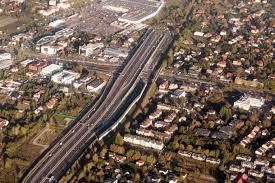
ul. Puławska is one of Warsaw’s most significant and longest streets, stretching from the heart of the city deep into its southern districts. While many locals and visitors know ul. Puławska as a bustling artery filled with shops, offices, and transport links, few are aware of the rich and fascinating history behind this iconic street. This article uncovers the lesser-known stories and historical facts about ul. Puławska that paint a vivid picture of its evolution over the centuries.
Origins and Early History of ul. Puławska
The origins of ul. Puławska date back to the 17th and 18th centuries, during the era when Warsaw was expanding beyond its medieval core. The street was originally a road leading from the city toward the town of Puławy, hence its name. This route was vital for trade and travel, connecting Warsaw with the southern parts of Poland. At that time, the area surrounding ul. Puławska was mostly rural, dotted with farms, estates, and small villages.
The road was essential for merchants transporting goods such as grain, timber, and textiles between Warsaw and other parts of the country. The name ul. Puławska literally means “Puławy Street,” marking it as a main thoroughfare on the way to the town of Puławy, which lies approximately 130 kilometers south of Warsaw.
The 19th Century: Development and Urbanization
The 19th century brought significant changes to ul. Puławska and its surroundings. As Warsaw grew rapidly due to industrialization and urbanization, ul. Puławska transformed from a country road into an urban street. The development was fueled by the city’s expansion, with new neighborhoods emerging along the road.
During this period, ul. Puławska became a key route for trams, linking the city center with the growing southern suburbs. The introduction of tram lines in the late 19th century helped shape the street’s identity as a vital transportation corridor. Alongside the trams, horse-drawn carriages and later motor vehicles began to frequent ul. Puławska, making it one of the busiest roads in Warsaw.
Many villas and mansions were built along ul. Puławska during this time, particularly in the southern parts of the street. These homes belonged to Warsaw’s affluent middle class and aristocracy who sought to live away from the city’s hustle while remaining connected via ul. Puławska.
World War II and Its Impact on ul. Puławska
The events of World War II left a profound mark on ul. Puławska. Warsaw was heavily bombed and devastated during the war, and ul. Puławska was no exception. Parts of the street suffered damage from bombings and street battles, especially during the Warsaw Uprising of 1944.
Many buildings along ul. Puławska were destroyed or severely damaged during the conflict. After the war, the street became part of the city’s extensive reconstruction efforts. The rebuilding phase saw a mix of architectural styles emerge, including modernist blocks alongside restored historic buildings.
The war also influenced the social fabric of the neighborhoods surrounding ul. Puławska, as populations shifted and new housing developments were constructed to accommodate displaced residents. The post-war era was a time of rebuilding and renewal, and ul. Puławska played a key role in reconnecting Warsaw’s communities.
ul. Puławska During the Communist Era
In the decades following World War II, ul. Puławska underwent further transformation during the communist period. This era was characterized by the construction of large-scale housing estates, offices, and state-run enterprises along and near ul. Puławska.
The street was modernized with wider lanes to accommodate increasing car traffic, and public transportation was expanded to meet the demands of a growing urban population. The introduction of trolleybuses and later buses complemented the existing tram network, making ul. Puławska a backbone of Warsaw’s public transport system.
During this time, many historic villas and mansions were replaced or overshadowed by utilitarian apartment blocks, reflecting the architectural and social priorities of the communist government. However, ul. Puławska remained a vital corridor for connecting the southern districts of Warsaw with the city center.
Modern ul. Puławska: A Blend of History and Progress
Today, ul. Puławska is a dynamic and diverse street that reflects the many layers of Warsaw’s history. The street stretches over 12 kilometers, making it one of the longest in the city, running from the city center near the Wilanów district, through Mokotów and Ursynów, and reaching the southern outskirts.
Modern ul. Puławska is home to a mix of historic buildings, post-war apartment complexes, and contemporary commercial developments. The street has become an important hub for shopping, business, and transportation. Its tram lines remain a crucial part of Warsaw’s public transit system, with millions of passengers using them annually.
Despite modernization, traces of ul. Puławska’s past can still be found. Some 19th-century villas and mansions have survived, standing as reminders of the street’s aristocratic roots. Green spaces and parks along the street offer a glimpse of the more rural, pastoral setting that once dominated the area.
Lesser-Known Facts About ul. Puławska
Many people do not realize that ul. Puławska played a strategic role during various historical periods beyond just commerce and transport. For example, during the Napoleonic Wars, the road was used by military units moving through Warsaw, and its location made it a key route for troop movements.
Additionally, ul. Puławska has been the site of numerous cultural and social events throughout Warsaw’s history. Several theaters, cinemas, and cultural centers once lined the street, making it a lively social artery.
The street’s name has remained unchanged for centuries, which is rare in Warsaw, where many streets have been renamed multiple times due to political changes. This continuity highlights the enduring importance of ul. Puławska as a landmark in the city.
Conclusion: The Living Legacy of ul. Puławska
ul. Puławska is far more than just a busy street in Warsaw; it is a living testament to the city’s historical, social, and urban development. From its beginnings as a rural road connecting Warsaw with Puławy, through wars, reconstruction, and modernization, ul. Puławska has continually adapted to the needs of its residents while preserving pieces of its past.
Understanding the history of ul. Puławska enriches our appreciation of Warsaw’s complex identity and reminds us that every street has stories worth uncovering. Whether you travel along ul. Puławska for work, leisure, or daily errands, you are moving through a corridor shaped by centuries of change and resilience.





